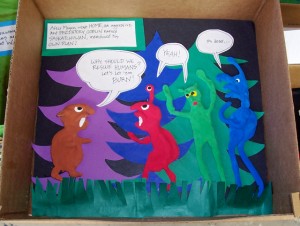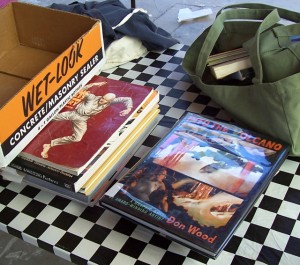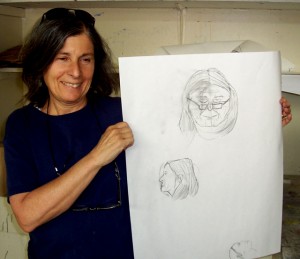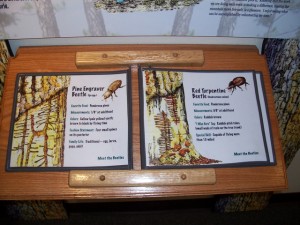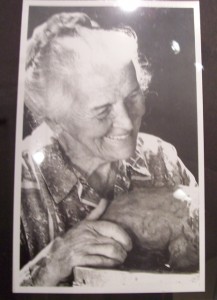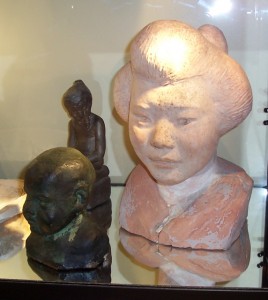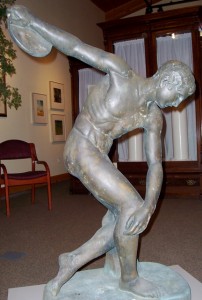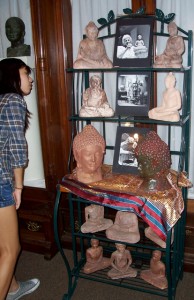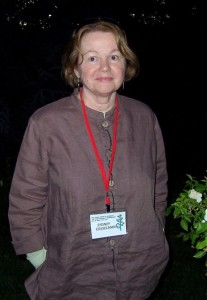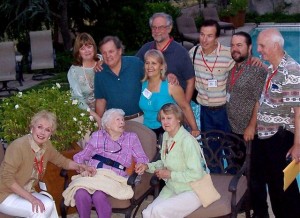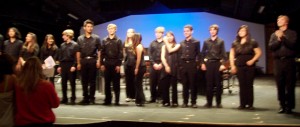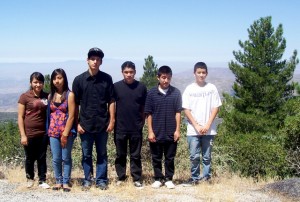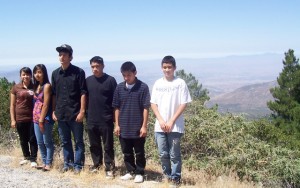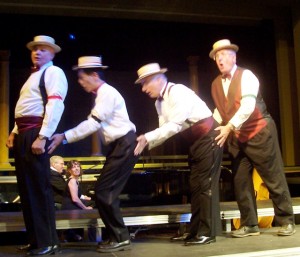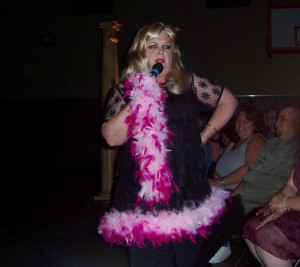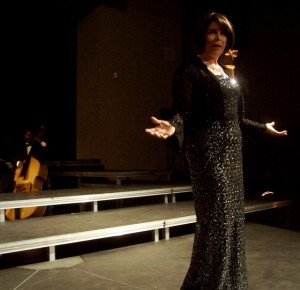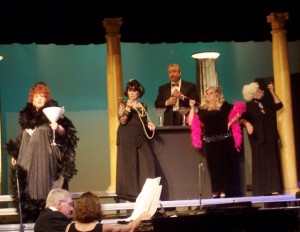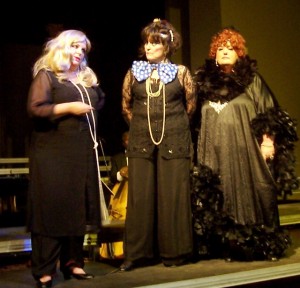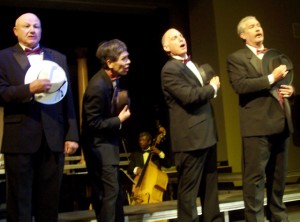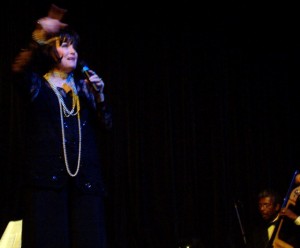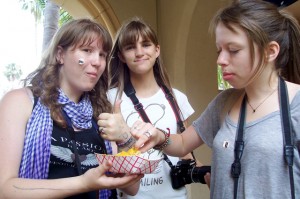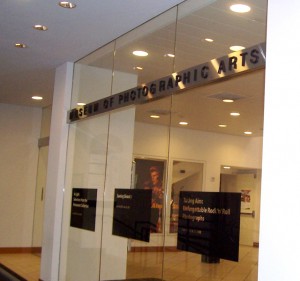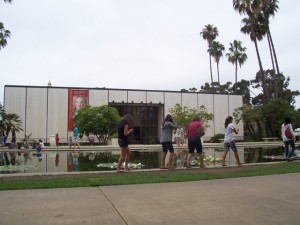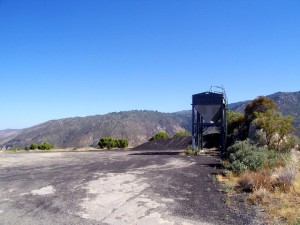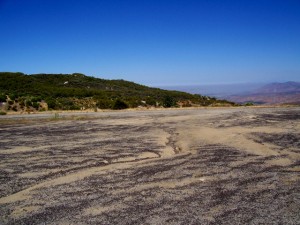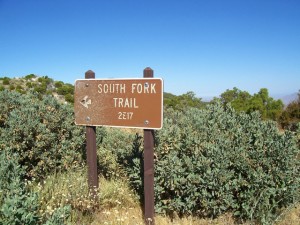Gadzooks! It’s Comics Class!
August 13, 2010By Marcia E. Gawecki
“Gadzooks, Batman, the Joker just fell into a vat of hot lava!”
Ever since DC Comics came out with “Superman” in 1932, America has had an ongoing love affair with comics. When Marvel Comics expanded the lot with Spider Man, the Hulk, Wolverine, and Iron Man, and jumped to the big screen, even wider audiences are loving comics.
“It used to be that comics were not considered ‘high art,'” said Jessica Shiffman, a local book illustrator, who has taught a comics class at Idyllwild Arts Summer Program for the past seven years.
Yet, on a back table in the outdoor studio in the Children’s Center on campus, there are piles of coffee table art books solely devoted to comics and graphic novels. Jessica keeps them back there to refer to when she’s talking to her class. She also encourages her students to read them to learn more about the craft.
The Comics class is small, only five students, but optimal for one-on-one teacher interactions. The students, mostly from southern California, are aged 11 to 13 years old. But don’t let their young age stop you.
“Each of them has created their own comics at some point,” Jessica said. “They’re all incredibly smart and gifted artists.”
When Jessica asked them to write a story that they all could illustrate, they couldn’t agree on the ending.
“So now we have two endings,” Jessica said.
Their story goes like this: Goblins and humans are fighting, and there’s only one person who can talk to both sides, Megan, a little girl. She convinces the goblins that they need to make peace with the humans. So they devise a plan to set the forest on fire, and then put it out, and save the day. That way, the humans will be grateful, and everyone will be happy.
“They had to solve a problem,” explained Jessica. “And forest fires are topical, and reflective on what’s going on in the real world.”
Yet, for three of the students, there is a different ending. Saskatchuwan, one of the evil goblins doesn’t want to make peace with the humans, and says, “Let the forest burn!” Other goblins don’t agree, but they’re too weak to stand up to him.
Sophie, whose mother is a movie producer defended her decision for that alternative ending.
“Happy endings are so predictable and dumb!” she said.
Her friend, Tritzah, age 11, agreed. But when asked how they could tell a story in which the humans die, the two girls, frowning said, “Who said that we were human?”
“You didn’t grow up watching ‘Dr. Who,’ did you?” Sophie asked. “When you see them, come back and talk to me!
On Wednesday, August 12, the class was finishing up their shadow boxes that would tell the goblin-human-fire story with two endings. Sophie was rolling out small pieces of clay to make bricks for a house in her shadow box.
She planned to use them again later to make a clay animation video, she said.
The brightly colored clay is called, “model magic,” and it’s made by Crayola. It soft, and pliable like clay, but less brittle and easier to work with. Next to the clay images of goblins and humans are dialog boxes of what’s being said or what’s going on in the scene.
Construction paper, glue, feathers, and clay. Simple materials to tell a story.
The next day, Jessica and the students were going to share their progress with the rest of the school at “Share Pad.”
“We only have a few minutes to show what we’re doing,” Jessica said. “They won’t be able to see everything, but just get a jist of it.”
She said that the parents would be able to see the shadow boxes up close later.
No rest for the wicked, or the imaginable. On Friday, the Comics class was going to hollow out gourds that they’ll later use to make puppets. Jessica and her artist husband, Bill, went to Fallbrook last weekend and picked out 12 gourds.
“We have to soak them and scrape off the skin,” Jessica said.
Next week, the class will learn how to make gourd puppets.
“We didn’t start out making gourd puppets in Comic class,” Jessica explained. “I was actually thinking of turning it into another summer class. But the kids liked it so much that we kept it as part of the curriculum.”
The Comics class runs from 9 a.m. to 4 p.m. for two weeks. The students get a lunch break, and snack breaks, but they often work right through them, Jessica said.
To warm up each day, the students do traditional drawing exercises. Yesterday, they did gesture drawings, or 60-second pose drawings of each other. Gesture drawings get students to look at bodily poses.
The previous day, the exercise was portraits. They each drew each other, and Matthew drew a portrait of Jessica.
“See? This is what I look like,” Jessica said, as she held up a portrait of herself.
Max, age 13, from Palm Springs, had completed his shadow box was doodling on paper in a far corner. He had written his name in block letters using black and silver markers. On the wall next to him is faded graffiti. Max doesn’t consider that art.
“All they’re doing is writing their names,” Max said. “It’s not art, but vandalism.”
Yet, his name in block letters resembles the tagger’s style. Where it all came from, you’ll have to look up in the history of comic books.
Connor, who was rolling out some clay, had to rewrite the word, “dos,” meaning, “two” in Spanish for the second ending to their story. It looked too much like the word, “dog,” Jessica warned.
Jessica couldn’t stop talking about how imaginative all of her students were, even the quiet ones like Matthew.
“In one of his stories, the earth ends, to stop global warming,” Jessica explained. “It eats up all the people, but spits out the wildlife.”
In another one, in honor of Friday, August 13th, Matthew created a comic about a flying burrito that caused a large hole in a woman’s stomach. When one surgeon refused to treat her, she climbed to the top of a flagpole and got stuck (because of the hole in her stomach).
All of this from 11 to 13-year-olds.
Copyright 2010 Idyllwild Me. All rights reserved.
All student’s artwork and stories are copyrighted to the students who created them. All rights reserved.

